Advertisements
Advertisements
प्रश्न
In the given figure, AP is the bisector of ∠A and CQ is the bisector of ∠C of parallelogram ABCD. 
Prove that APCQ is a parallelogram.
उत्तर
Construction: Join AC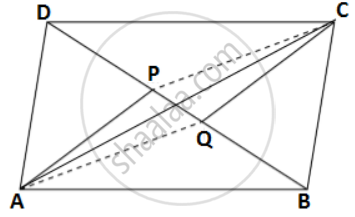
Proof:
∠BAP = `1/2`∠A ...( AP is the bisector of ∠A )
∠DCQ = `1/2`∠C ...( CQ is the bisector of ∠C )
⇒ ∠BAP = ∠DCQ ....(i)....[ ∠A = ∠R ( Opposite angles of a parallelogram.) ]
Now,
∠BAC = ∠DCA ....(ii)....[ Alternate angles since AB || DC ]
Subtracting (ii) from (i), We get
∠BAP - ∠BAC = ∠DCQ - ∠DCA
⇒ ∠CAP = ∠ACQ
⇒ AP || QC .....( Alternate angles are equal )
Similarly, PC || AQ.
Hence, APCQ is a parallelogram.
APPEARS IN
संबंधित प्रश्न
In the following figure, ABCD and PQRS are two parallelograms such that ∠D = 120° and ∠Q = 70°.
Find the value of x.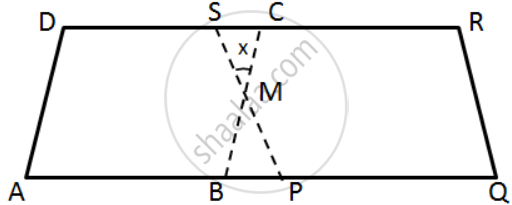
In the following figure, ABCD is a parallelogram. 
Prove that:
(i) AP bisects angle A.
(ii) BP bisects angle B
(iii) ∠DAP + ∠BCP = ∠APB
In the following figures, find the remaining angles of the parallelogram
In the following figures, find the remaining angles of the parallelogram
In the following figures, find the remaining angles of the parallelogram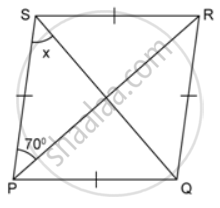
In a parallelogram ABCD ∠C = 98°. Find ∠A and ∠B.
Find the measures of all the angles of the parallelogram shown in the figure: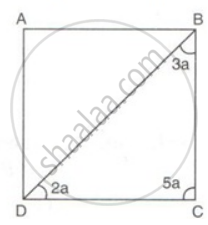
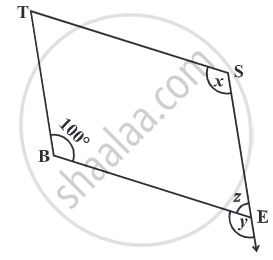
Opposite angles of a quadrilateral ABCD are equal. If AB = 4 cm, determine CD.
In parallelogram FIST, find ∠SFT, ∠OST and ∠STO.

